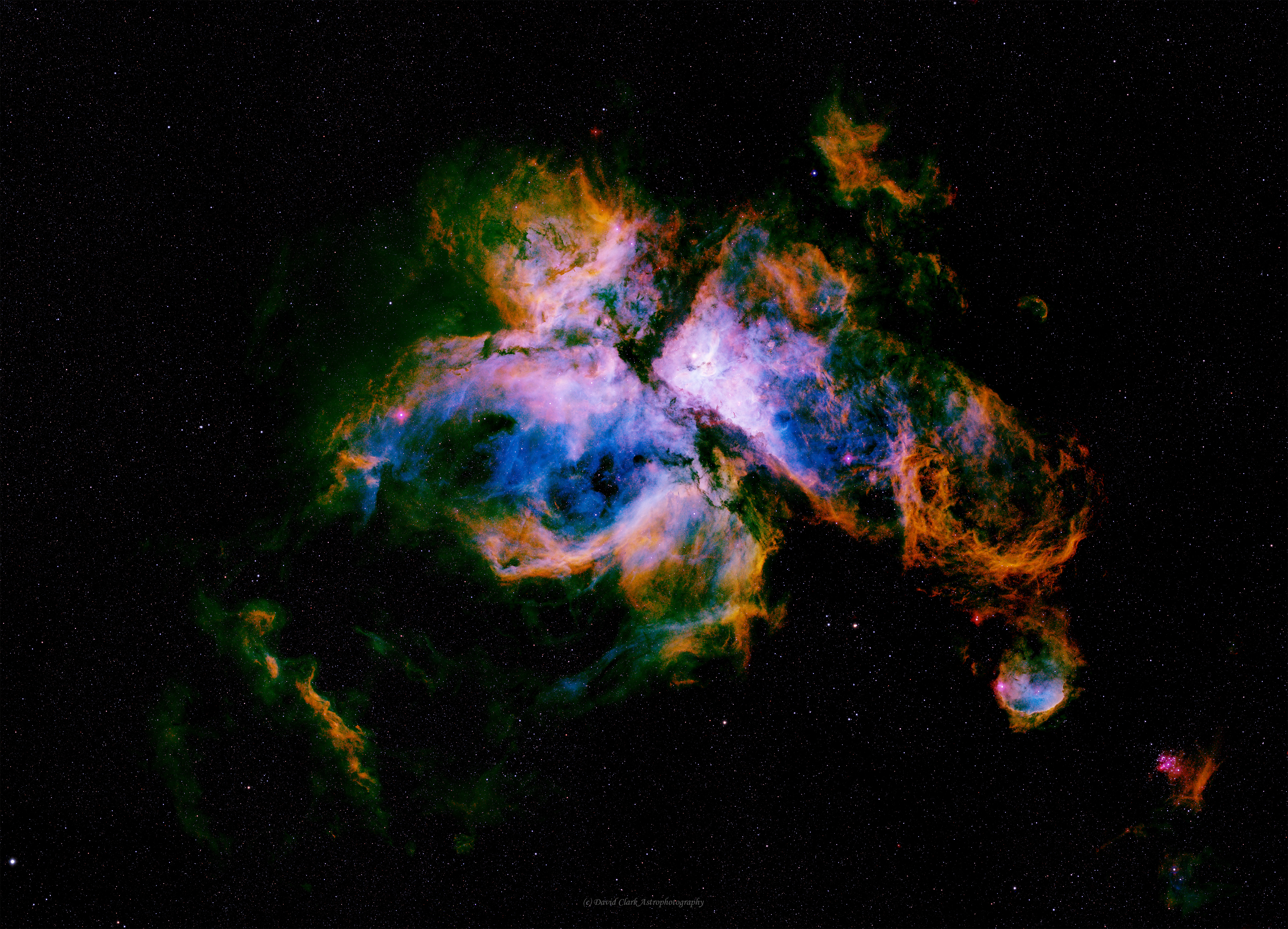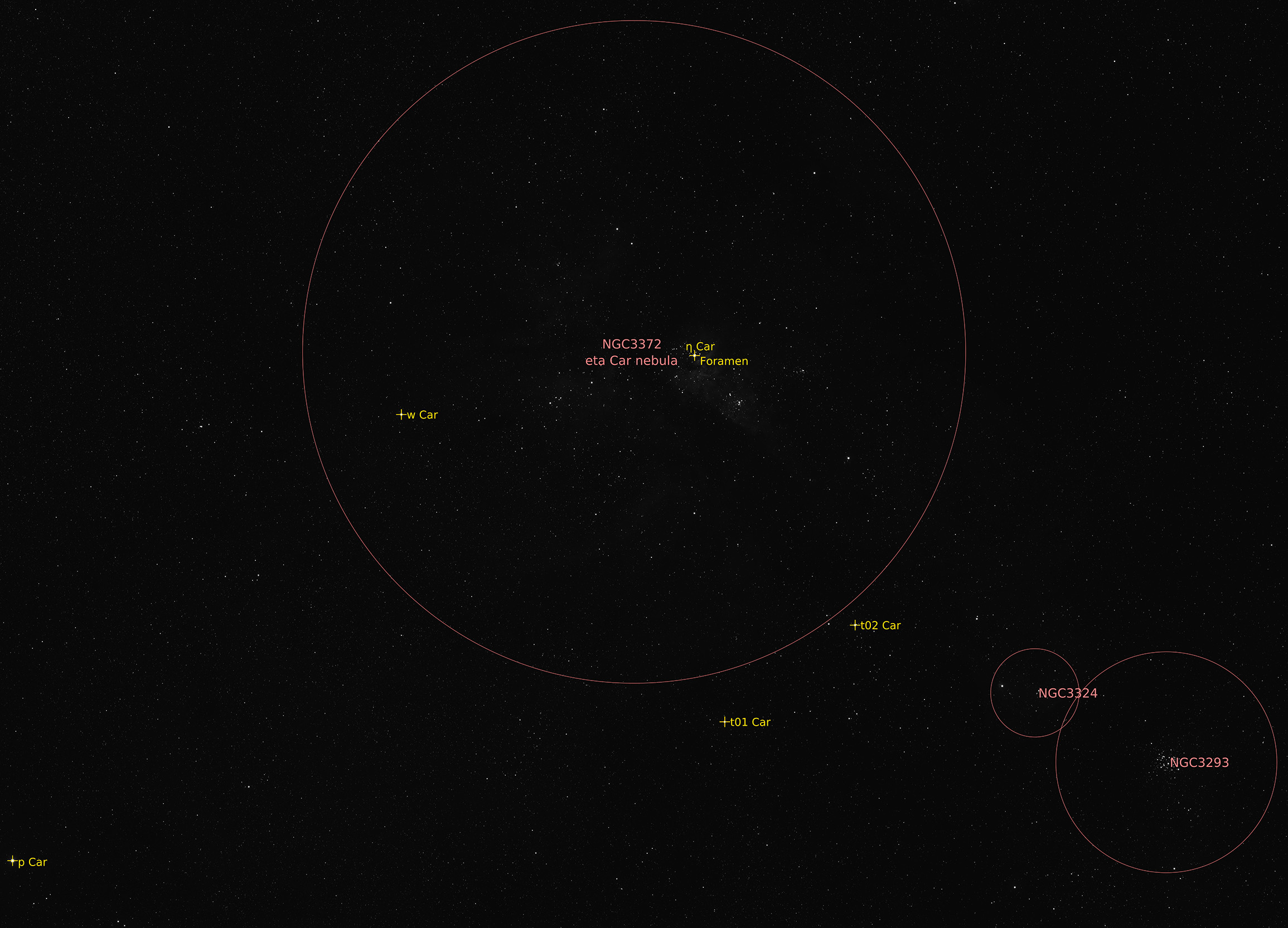 |
The Carina Nebula Mosaic
April 2020 The Carina Nebula (NGC 3372) is a large, complex area of bright and dark nebulosity in the constellation Carina. The nebula is approximately 7,500 light-years from Earth. The central (white looking) star is Eta Carina, which shines 4 million times as brightly as our sun, and is one of the most luminous stars in our galaxy. This star is illuminating the surrounding gas, making it shine. This image includes the star clusters NGC3324 (around the pretty emission nebula IC2599 to the bottom right) and NGC3293.
Annotated Star Map
This massive Carina Nebula mosaic image is composed of 16 frames (in a 4x4 grid) of LRGB and also narrowband imaging in H, SII and OIII. The narrowband data is combined in the 'Hubble Palette'.
The photos consists of 839 individual exposures, and 15Gb of data, taken over 8 nights in April 2020, using 60s and 180s exposures.
Clicking on the image to the left will take you to an interactive viewer, which will help you see the finer details in the enormous 170M pixel image (15401x11103). This is over 16 times the pixel count of a 4k HD monitor.
The equipment used was my SkyWatcher 120ED Esprit telescope and iOptron CEM60EC mount, from suburban Auckland, NZ.
The images were processed entirely using custom scripting in PixInsight. This allows the images to be automatically processed without any manual intervention across 16 frames (4x4 grid) and 7 filters (Luminance, Red, Green, Blue, Hydrogen alpha, Sulphur II, Oxygen III).
The automated image processing steps are:

|